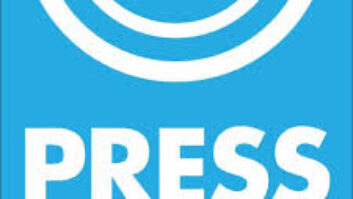
Imagine trying to measure your audience in third-world countries where people can’t afford a television set or a radio.
You can’t exactly ask these viewers and listeners to carry a portable people meter or fill out a diary. And call-outs don’t work either.
Yet that’s the audience Broadcasting Board of Governors-led U.S.-government-backed overseas broadcasters like VOA, Radio Liberty, Radio Marti are trying to reach. And to justify continued funding, the BBG needs to prove to the U.S. government that its broadcasters are relevant, impactful players.
BBG contracts with Gallup Poll to ask respondents about their media habits. In turn, Gallup works with local polling firms in the countries to get that data using in-person interviews.
Such interviews are typically 45 minutes in length and BBG keeps the data in its audience “wheelhouse” from two to five years. Think of it as an Arbitron/Jacobs Media Bedroom Project, a 2007 study of how young adults use digital media in their everyday lives, but for overseas listening, where interviewers ask respondents, in their local language, about their media habits for TV, AM/FM and shortwave radio, online and social media sites. In many countries, much of the audience is reporting out-of-home media consumption because they may not own a TV set or a radio receiver, or perhaps the government restricts their power use or for some other reason, like war.
Figures released today for something like 100 markets show BBG has a global audience estimate of 215 million weekly people 15+ in unduplicated audience, including radio, TV, and Internet, up from 206 million in 2013. Markets where BBG is unable to conduct audience research, like North Korea, Tibet, Cuba and others are excluded.
The overall takeaways, according to audience research officials for the BBG, is the television, and online audience is growing at 124 million and 25 million people weekly while radio is stable at 111 million weekly people.
The largest audiences by country in 2014 were in Indonesia, Nigeria and Iran, compared to Indonesia, Nigeria and Mexico in 2013. You can see how the top countries measured by BBG rate later today as part of a larger report on the BBG website.
When I asked whether the analog or digital radio and television audience is measured, officials said it depends on the “local regime” in each country — meaning the method of delivery by the local media affiliate that BBG partners with (some 2,300) in a particular country.
Of interest is how programming delivered by BBG broadcasters Alhurra and Radio Sawa to the Middle East and Northern Africa is counteracting propaganda by ISIL, data they hope to have soon.
Though overseas audience data-gathering is different from such data gathered for a U.S. audience, where advertising markets are key, I have some context for what BBG is doing. One of my news radio jobs was at Voice of America. In 1986 when Dictator Jean-Claude “Baby Doc” Duvalier was ousted, the U.S. wanted to add more hours of democratic programming aimed at Central America. I was the English news anchor and writer for a daily VOA program broadcast mainly in Creole to Haiti. Our shortwave frequency was changed often to counteract jamming by the Russians and Cubans. We announced slowly, to counteract the variable shortwave signal and wrote with no jargon or contractions, to account for the fact that the majority of listeners spoke English as a second or third language.
BBG broadcasters are still aiming their content to countries that have what they politely call “challenging” news environments; the advent of digital means now they have more avenues to try and reach those audiences.











